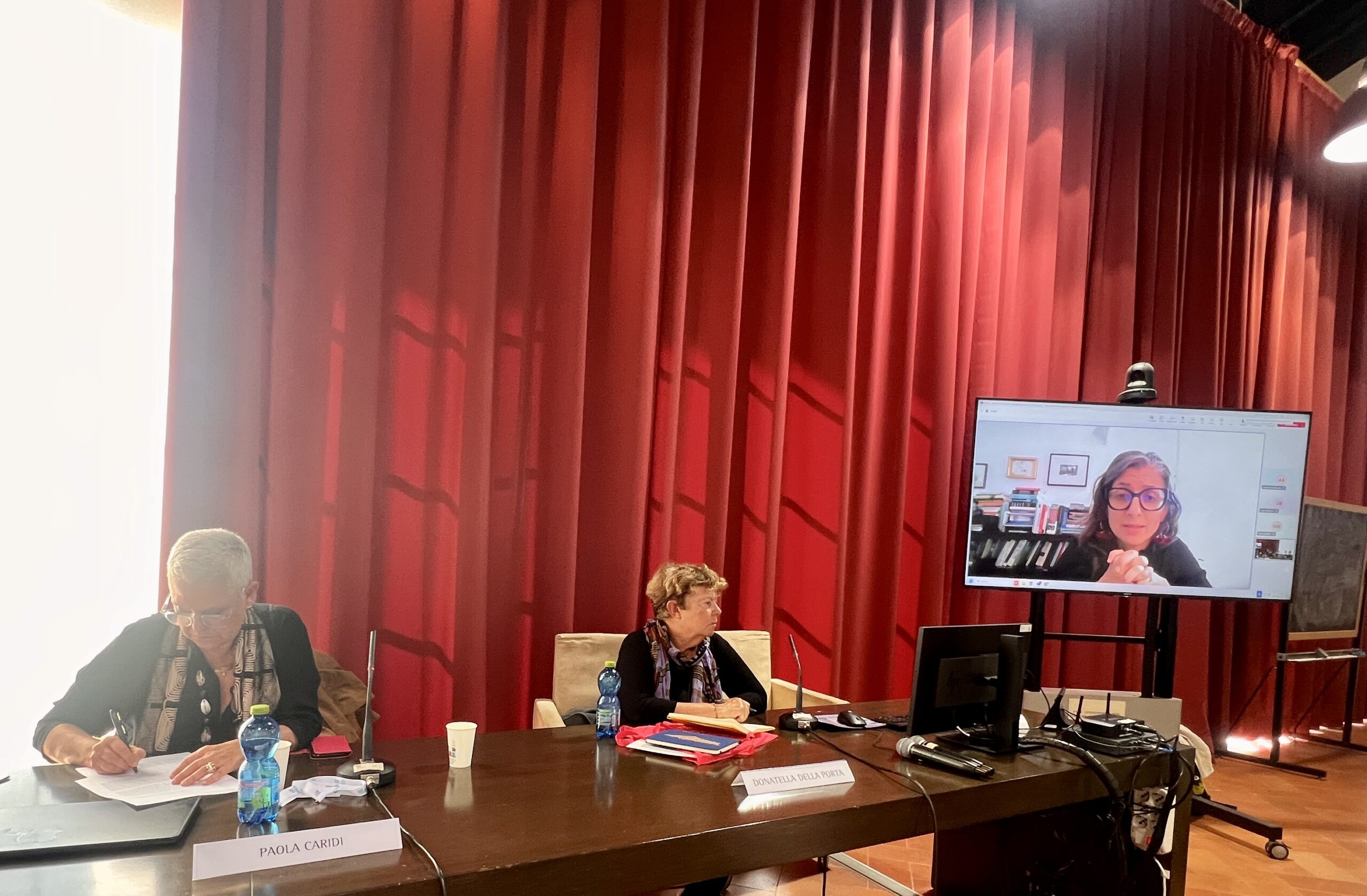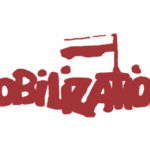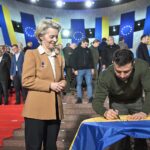A panel with Albanese, Caridi and Della Porta

(This is a brief report of the afternoon session of the War, Peace and the World Order Summer School held at Palazzo Strozzi from Sept 29 to Oct 3 2025, more reports and papers will be published on the Cosmos page in the coming days)
In some way the afternoon session of second day school on Palestine & Israel of the Summer school came in perfect timing. The UN special rapporteur on the Occupied Palestinian Territory, Francesca Albanese, and Paola Caridi, a scholar and author who has extensively researched and written on Hamas, Palestinians and the Region gave insight and background to the news of the proposed Trump plan for a Gaza ceasefire. Unfortunately professor Anna Foa who was also due to be part of this session was not able to be there, as it would have added another perspective.
Many of the issues touched by the panel have a direct connection with issues that are controversial in the ceasfire plan.
It is with picture in mind that Albanese and Caridi, introduced by professor Donatella Della Porta, have given their lectures on the “Global architecture of injustice” (Albanese) and a deep dive into the history and recent developments of Hamas (Caridi).
Special Rapporteur Albanese starts stressing that the violations of the international law in the Gaza war are a huge issue even beyond what she refers as “genocide” because they give the impression that “might is right” is the new normal. Allowing something like this to happen undermines the UN structure more than it is already been undermined.
Albanese also noticed that what we are seeing in Gaza is an acceleration of history and that the shock after October 7 has been understandable, but the reaction is part of a path that was already there. Settlers and colonies were already there and were working in the direction of an ethnic cleansing. When there are not stated military objectives or the will to limit the damage this is what will happen (quoting the Bible, Netanyahu referred to Amalek the enemy that must be annihilated). Albanese stressed that the dehumanization of the Palestinian people was already there before October 7, Palestinians are subjugated by military laws and practice and live in a sort of Panopticon, being observed through hi-tech, military posts, settlers and live in the permanent condition of having to ask for whatever they need to do (be it building a house of opening a business).
Albanese also reminded how her last report “From economy of occupation to economy of genocide” stresses how many companies are profiting from the war in Gaza and assisting a state that commits unlawful acts and how some of the things they do is unlawful under International Law and how there are precedents of corporations facing incriminations for their violations. Albanese also commended the Ravenna local authorities who have blocked a shipping of explosive to Israel from the port after the mobilization of dockers and civil society and in accordance to the Italian law on arm export, import and transit. The Special Rapporteur concluded her lecture stressing how being the international law not perfect it needs to be applied as Israel is doing things that are a clear violation of it, the problem is the justiciability. Finally, Albanese stressed how this moment has been a test freedoms in western democracies where the accusation of antisemitism has been used to to curb liberties and protests – professor Della Porta has written extensively on the issue and this is why she noticed that the war on Gaza is having effects also at the international level.
Paola Caridi gave an extensive lecture on the history of Hamas and its leadership in different moments and the on how Hamas is entangled in the Gaza society fabric for reasons that are not necessarily religious or ideological. Without understanding the role Hamas has played in delivering welfare, for instance, we do not understand its victory in the 2006 legislative elections which was not only a protest against the Palestinian authority.
A few things from Caridi’s lecture that can be useful to better understand the present.
A crucial moment is the Gaza coup by the Ezzedine al Qassam Brigades in June 2007, after which Hamas became more territorialized. The coup is also a moment in which the mediator’s role of the prisoners, who have often acted as such thanks to the prestige they enjoy for their captivity, fails.
Another turning point is the election of Yahya Sinwar as leader in Gaza, as the former inmate liberated in 2011 in the prisoner exchange for the Israeli soldier Gilat Shalit. With time and under Sinwar leadership, Hamas’s grip on Gaza became stronger.
Mentioning the Qassam Brigade or the prisoner’s role brings to another issue, that of the many segments of Hamas: Gaza, West Bank, those leaving in refugee camps abroad and the prisoners. For experience, role and biography each of these groups has had different attitudes. With the election of the former leader of Gaza Ismail Hanyeh in 2017 as chairman of the Hamas Political Bureau and Sinwar taking his place in Gaza, the segment from the Srip becomes more important than ever. The role of the military wing also grows, making it a fifth segment of Hamas’s leadership. With time there is also more disconnection between the exiled leadership and that in Gaza.
This brings as to 2024. Caridi explains the October 7 attack with Hamas’s fear of Saudi Arabia joining the Abraham Accords, the missing leverage for asking prisoner’s swap (hostages), the relaunch of the national case and the increased Israeli presence and pressure on the Haram al Sharif compound. Caridi also stresses that Hamas expected an involvement from Hezbollah and Iran that did not come.
Commenting on “Trumps plan” for a ceasefire, Caridi stresses the foggy situation in which observers find themselves: nobody knows exactly who is taking decisions and how, what are the different points of view from different segments of the leadership who are still alive. Caridi also stresses that, among other things (e.g. the absence of a path towards statehood) the plan misses a point when it mentions total disarmament. In similar situations of the past and in other countries, rebel armed groups that sign peace agreements are often absorbed or become the police or part of the army; the problem with Hamas and Gaza is that it is not a State or a recognized institution and therefore this won’t be possible.
28/10/2025

14/10/2025

Journal Article - 2025
Journal Article - 2023
Journal Article - 2023
Journal Article - 2023
Journal Article - 2023
Monograph - 2023
Monograph - 2022
Monograph - 2022
Journal Article - 2021
Journal Article - 2021